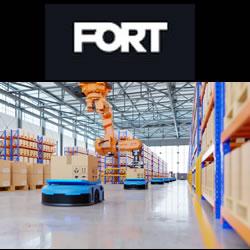RE2 Robotics to Add Autonomy to Rapid Airfield Damage Recovery Robotic System
This $400,000 funding increment is the first task order in support of Explosive Ordnance Disposal (EOD) and the Research, Develop, Test, and Evaluation of unmanned systems for the Air Force Civil Engineer Center (AFCEC). The project is being executed as a subcontract to Torch Technologies’ Prime Contract, called Explosive Ordnance Disposal and Unmanned Systems Technologies (EODUST).
PITTSBURGH, PA - Jan. 26, 2021 - RE2 Robotics, a leading developer of intelligent mobile manipulation systems, has announced that the Company has received follow-on funding to add autonomy to its Rapid Airfield Damage Recovery (RADR) robotic system. This $400,000 funding increment is the first task order in support of Explosive Ordnance Disposal (EOD) and the Research, Develop, Test, and Evaluation of unmanned systems for the Air Force Civil Engineer Center (AFCEC). The project is being executed as a subcontract to Torch Technologies' Prime Contract, called Explosive Ordnance Disposal and Unmanned Systems Technologies (EODUST).
RADR is a drop-in robotic system designed to enable the Air Force to use existing construction ground vehicles as robotic vehicles during clean-up efforts following an airfield strike. The project will extend the proven accomplishments of the Company's teleoperated system, RADR-T, by adding autonomy components to the in-cab robotic applique kit. The goal of the system is to provide the user with more awareness of the vehicle's surroundings and perform automated maneuvers when necessary.
"This project builds on the previous work we have performed for AFCEC using the RADR-T system, including successful deployment of the system to Tyndall Air Force Base to help with disaster cleanup following Hurricane Michael in 2018," said Jorgen Pedersen, president and CEO. "These advancements to the system will also allow RE2 to expand its toolset for the autonomous guidance of robotic arms, including its offerings in artificial intelligence technologies. This drop-in technology would also be applicable to commercial markets and allow companies to automate existing manned vehicles without the expense of purchasing new assets."
The program, known as RADR-Autonomous or RADR-A, extends the previous work done on the RADR-T project by implementing the system into a new vehicle, the CAT® Skid Steer. The Company also plans to develop enhanced visualization of in-cab buttons, switches, and external obstacles, which will allow the system to make autonomous decisions and assist the operator in avoiding obstacles while performing tasks.
"This project also expands RADR-T by developing and implementing hardware that will be needed to support both autonomous and human-in-the-loop technology onto RADR-T," said Dr. Adam Brant, project manager. "In addition to enhancing the vehicle's perception processes, another goal of the project is to augment the in-cab hardware with an even more human-like robotic arm, so that the tasks of pressing buttons and operating levers will become more efficient."
About RE2 Robotics
RE2 Robotics develops intelligent mobile manipulation systems that operate in a variety of complex indoor and outdoor environments for use in the aviation, defense, energy, and medical industries. RE2's mission is to develop mobile manipulation systems that empower humans to do their jobs faster and safer. RE2's systems consist of robotic arms, intuitive controllers, and advanced autonomy software. Visit www.resquared.com to learn more about our company, our people, and our robotic technologies.
Featured Product

